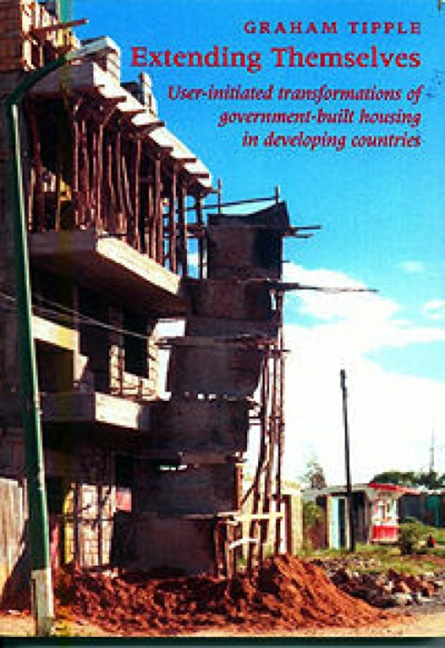 Extending Themselves
Extending Themselves Book contents
- Frontmatter
- Contents
- Acknowledgements
- 1 Introduction
- 2 The housing squeeze
- 3 More than just a dwelling
- 4 The financial element: transformation as an investment
- 5 Sustainability issues
- 6 The transformation process
- 7 The case for transformations
- 8 Policies for enabling transformations
- Appendix 1 Transformations in Bangladesh
- Appendix 2 Transformations in Egypt
- Appendix 3 Transformations in Ghana
- Appendix 4 Transformations in Zimbabwe
- Appendix 5 An assessment of the decision to transform
- References
- Index
8 - Policies for enabling transformations
- Frontmatter
- Contents
- Acknowledgements
- 1 Introduction
- 2 The housing squeeze
- 3 More than just a dwelling
- 4 The financial element: transformation as an investment
- 5 Sustainability issues
- 6 The transformation process
- 7 The case for transformations
- 8 Policies for enabling transformations
- Appendix 1 Transformations in Bangladesh
- Appendix 2 Transformations in Egypt
- Appendix 3 Transformations in Ghana
- Appendix 4 Transformations in Zimbabwe
- Appendix 5 An assessment of the decision to transform
- References
- Index
Summary
Introduction
As we have seen from the analysis (and from our case studies in the appendices) transformers add considerable amounts of housing goods to the current stock. This varies from about 50 per cent extra in Zimbabwe to 150 per cent in Bangladesh. They do so in areas which are already developed so no new land is required (the urban footprint does not expand except indirectly). Furthermore, they do not appear to receive any assistance from the housing budget but succeed in increasing the share of investment accruing to housing and, by so doing, increase Gross Fixed Capital Formation. Thus, as we argue, transformation is a form of neighbourhood upgrading.
On housing supply grounds alone, governments have much to gain from encouraging transformations. On the other hand, there are potential, incipient or established problems of crowding of structures for which some development control would be advisable. These include lack of ventilation, daylighting and open space around or within the dwelling, access, surface water drainage, etc. These are, of course, exacerbated in some areas by the very small and/or narrow plots which are provided in many government-built housing areas. Our Bangladesh and Ghana samples show the problems which arise here. The accusation that transformers are building slums is a difficult one to counter as long as breaches of planning and building regulations are common. It is particularly difficult where they have been done without reference to the planning authorities. The multi-storey stacks in Egypt have been built in defiance of planning officials and the extensions in Bangladesh are in areas where planning controls do not apply. Even where planners admit that the planning and building regulations in force are inappropriate for the economic and social circumstances in a country, they still find a laissez-faire alternative unpalatable and it would be naive of us to assume that it could be accepted.
We suggest, however, that governments could benefit greatly from an essentially permissive attitude towards transformers. At one end of the spectrum, there would be light control. This would prevent the worst excesses which can be characterised (in a spirit of hyperbole) as a dominant neighbour sweeping all local objections before him (or her) to erect a giant edifice of rented rooms for personal profit.
- Type
- Chapter
- Information
- Extending ThemselvesUser Initiated Transformations of Government-built Housing in Developing Countries, pp. 147 - 164Publisher: Liverpool University PressPrint publication year: 2000


